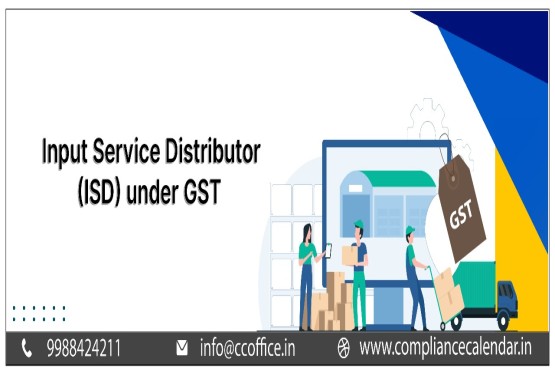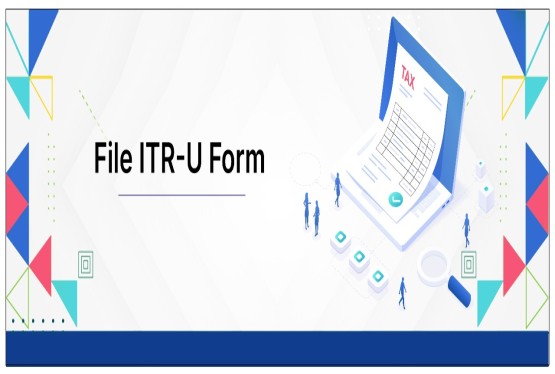Any person making a specified payment to a Non-Resident Indian (NRI) is required to Tax Deduction at Source (TDS) under the Indian Income Tax Act. This rule is designed to ensure that the government collects income tax at the time the income is generated, rather than waiting for the end of the financial year. One of the important tools used in this process is Form 27Q, which deals specifically with TDS on payments made to NRIs. In this article, we will understand the full scope of Form 27Q, its filing process, due dates, penalties, and other related aspects in detail.
What is TDS Return?
TDS Return is a quarterly statement submitted by the deductor to the Income Tax Department. It is a summary of all the tax deducted at source on payments made during that quarter. The return must contain specific details, such as the Permanent Account Number (PAN) and Tax Deduction and Collection Account Number (TAN) of both the deductor and deductee, payment details, challan information, and the amount of TDS paid. These returns are crucial for keeping track of the tax deducted and deposited with the government and for ensuring the deductee gets proper credit for the same in their tax records.
Form 27Q TDS Return Meaning
Form 27Q is used for reporting TDS deducted on payments made to Non-Resident Indians and foreign companies. It is applicable only for payments other than salary. This form must be submitted every quarter and includes all details of transactions where TDS is applicable under Section 195 of the Income Tax Act. If an NRI does not provide a valid PAN, a higher TDS rate of 20% is applicable. The form captures details of the nature of payments, amount, and applicable TDS, ensuring the government receives timely tax on cross-border income.
Parties Involved in TDS Payment
There are two main parties involved in TDS under Form 27Q:
-
Payer: The person or entity making the payment to the NRI. This could be an individual, company, firm, or Hindu Undivided Family (HUF). The payer is responsible for deducting the applicable TDS before making the payment to the NRI.
-
Payee: The NRI or foreign company receiving the payment. The residential status of the payee is determined as per Section 6 of the Income Tax Act.
It's important to note that TDS under Form 27Q does not apply to payments like dividends, salary, and specific types of interest covered under other sections such as 194LB, 194LC, or 194LD.
Rates for Deducting TDS
The TDS rates under Form 27Q vary depending on the type of payment being made to the NRI. The following table outlines the key rates:
-
Section 194E: 20% on payments to sports associations or sportsmen
-
Section 194LB: 5% on interest payments on infrastructure debt funds
-
Section 194LC: 5% on interest paid by Indian companies for foreign currency loans
-
Section 195:
-
20% on investment income by NRIs
-
10% on long-term capital gains on unlisted shares
-
15% on short-term capital gains (Section 111A)
-
10% on long-term capital gains (Section 112A)
-
10% on royalties or technical service fees
-
30% for any other income type
These rates are exclusive of applicable surcharge and cess. The Reserve Bank of India (RBI) exchange rate on the date of payment is used for conversion to INR.
Lower TDS Rate or Exemption for NRIs
NRIs have the option to request a lower rate or full exemption from TDS by submitting Form 13 to the Assessing Officer. If approved, the officer may issue a certificate authorizing the payer to deduct tax at a reduced rate or not deduct it at all. This helps in cases where the actual tax liability of the NRI is lower than the standard TDS rate.
Details Required to be Filled in Form 27Q
To correctly file Form 27Q, the following details must be furnished:
Details of the Payer:
-
Full name
-
Address
-
PAN and TAN
-
Financial year and assessment year
-
Contact information
-
Whether the return is original or revised
Details of the Payee:
-
Name and address
-
PAN or TIN (if PAN not available)
-
Country of residence
-
Email and contact number
Challan Details:
-
BSR code
-
Challan serial number
-
TDS amount, surcharge, cess
-
Interest and total tax deposited
-
Payment mode and deposit date
Deduction Details:
-
Amount paid to payee
-
TDS amount
-
Collector’s PAN
These details ensure transparency and proper tax credit to the payee.
Form 27Q TDS Return Due Date
TDS returns using Form 27Q must be filed quarterly. The deadlines are as follows:
|
Quarter |
Period Covered |
Due Date |
|
Q1 |
April 1 - June 30 |
July 31 |
|
Q2 |
July 1 - September 30 |
October 31 |
|
Q3 |
October 1 - December 31 |
January 31 |
|
Q4 |
January 1 - March 31 |
May 31 |
Classification of Form 27Q
Form 27Q contains three main sections:
1. Statistics of Voucher
This section includes a summary of transactions categorized as:
-
Included: Valid transactions with proper TDS.
-
Excluded: Payments not liable for TDS.
-
Uncertain: Entries with missing or incorrect data.
Examples of included entries:
-
TDS deducted while booking the expense
-
Advance payments
-
TDS reversals and adjustments
Excluded entries:
-
Contra vouchers
-
Payroll or inventory vouchers
-
Optional or sales order entries
2. Deduction Details
The deduction section outlines the classification of deductions, such as:
-
At normal rate
-
At lower or higher rate
-
Where PAN is not available
-
Under exemption threshold
Each category lists the assessable value, deducted amount, and TDS rate.
3. Payment Details
This includes all TDS payments made during the quarter:
-
Challan numbers
-
Dates of deposit
-
Amount paid
-
Details of payment methods
Only relevant and current period transactions are reflected here.
Procedure for TDS Deduction Under Form 27Q
TDS must be deducted at the time of making payment to the NRI. The applicable rate and TDS amount should be mentioned in the sale or service agreement. Once the TDS is deducted, the payer must deposit it to the government through a challan by the 7th of the following month.
After depositing the TDS, the payer is required to file Form 27Q. This form must be submitted before the quarterly due date. Filing the form is essential for generating the TDS certificate (Form 16A), which must be issued to the NRI within 15 days after filing the return.
How to Fill Form 27Q Online
You cannot fill Form 27Q directly online like a normal form. However, a specific digital process must be followed using official tools:
-
Download the e-TDS RPU: Visit TIN Protean website and download the Return Preparation Utility (RPU).
-
Prepare Form 27Q: Enter details such as payer/payee PAN, payment details, and TDS amount.
-
Validate the File: Use the File Validation Utility (FVU) to check for any errors before submission.
-
Submit at TIN-FC: Once the file is validated, submit it to a TIN Facilitation Center (NSDL) or upload it via the online portal (if you have a digital signature).
Once filed, the taxpayer can check the return status by entering the PAN and token number on the NSDL site.
Late Filing of TDS Returns with Form 27Q
If TDS is not deducted or deposited on time, or Form 27Q is filed late, penalties apply:
Interest on Late Deduction:
-
1% per month from due date of deduction to actual deduction date.
Interest on Late Deposit:
-
1.5% per month from date of deduction to actual date of deposit.
Penalty for Late Filing (Section 234E):
-
Rs.200 per day till return is filed
-
Maximum: Amount equal to TDS deducted
Penalty for Non-Filing (Section 271H):
-
Rs.10,000 to Rs.1,00,000
-
No penalty if:
-
TDS is deposited
-
Late fees and interest are paid
-
Return is filed within one year
How to Download Form 27Q?
To download Form 27Q:
-
Visit the TIN NSDL website.
-
Go to the ‘Downloads’ tab.
-
Click on ‘Quarterly Returns’.
-
Select Form 27Q and save it.
This form can be used to manually or digitally prepare returns before submission.
TDS Certificate
After the TDS return is successfully filed using Form 27Q, the deductor must issue a TDS certificate (Form 16A) to the NRI. This certificate acts as proof of tax deducted and should be provided within 15 days after the filing deadline for the quarter.
The TDS certificate is vital for the payee to claim credit while filing their tax return or applying for a refund (if excess tax is deducted).
Budget 2024 Update: Key Announcements Affecting TDS
The Union Budget 2024 has made significant changes for those under the new tax regime:
-
Standard Deduction for Salaried Employees increased from Rs.50,000 to Rs.75,000.
-
Family Pension Deduction raised from Rs.15,000 to Rs.25,000.
-
New Tax Rates under the revised regime:
-
Up to Rs.3 lakh – NIL
-
Rs.3 to 7 lakh – 5%
-
Rs.7 to 10 lakh – 10%
-
Rs.10 to 12 lakh – 15%
-
Rs.12 to 15 lakh – 20%
-
Above Rs.15 lakh – 30%
This may affect the overall TDS calculations, especially when remitting income under contractual arrangements.
Final Thoughts
Form 27Q plays an important role in ensuring tax compliance when making payments to Non-Resident Indians. From deduction to deposition and return filing, each step must be performed carefully to avoid penalties and maintain accurate records. Businesses, individuals, and organizations engaging with NRIs must familiarize themselves with the requirements of TDS Return on Payments to NRIs and timely file Form 27Q to stay compliant with Indian tax laws.
FAQs
Q1. What is Form 27Q, and when is it required to be filed?
Ans. Form 27Q is a quarterly TDS return statement mandated under Section 195 of the Income Tax Act, 1961. It's used to report TDS deducted on non-salary payments made to Non-Resident Indians (NRIs) and foreign entities. It must be filed quarterly, with deadlines on July 31st, October 31st, January 31st, and May 31st.
Q2. What types of payments are covered under Form 27Q, and how does it differ from Form 24Q?
Ans. Form 27Q covers various non-salary payments, including interest, dividends, royalties, fees for technical services, professional fees, rent, and capital gains, made to NRIs and foreign entities. Form 24Q, on the other hand, is used to report TDS on salary payments.
Q3. What are the key steps involved in the TDS deduction process under Form 27Q, and what challan is used for depositing the deducted TDS?
Ans. The process involves determining TDS applicability, calculating the TDS amount, deducting the TDS at the time of payment, and depositing the deducted TDS to the government using Challan No. ITNS 281 within seven days from the end of the month in which the deduction is made.
Q4. What are the consequences of non-compliance with Form 27Q filing requirements, including late filing and non-deduction of TDS?
Ans. Non-compliance can lead to interest charges at 1% per month for late deduction and 1.5% per month for late deposit of TDS. A late filing fee of Rs.200 per day is levied under Section 234E, and a penalty ranging from Rs.10,000 to Rs.1,00,000 can be imposed under Section 271H for failure to file the return within the prescribed time.
Q5. After filing Form 27Q, what document must the deductor issue to the payee, and within what timeframe?
Ans. After filing Form 27Q, the deductor must issue a TDS certificate in Form 16A to the payee within 15 days from the due date of filing the return.









_crop10_thumb.jpg)


















































































_for_FY_2025-26_crop10_thumb.jpg)












_learn_crop10_thumb.jpg)








_Filing_Due_Dates_for_FY_2024-25_learn_crop10_thumb.jpeg)













